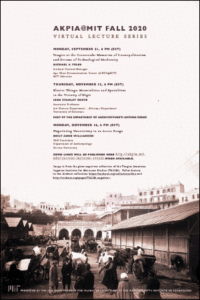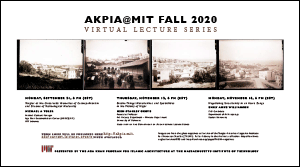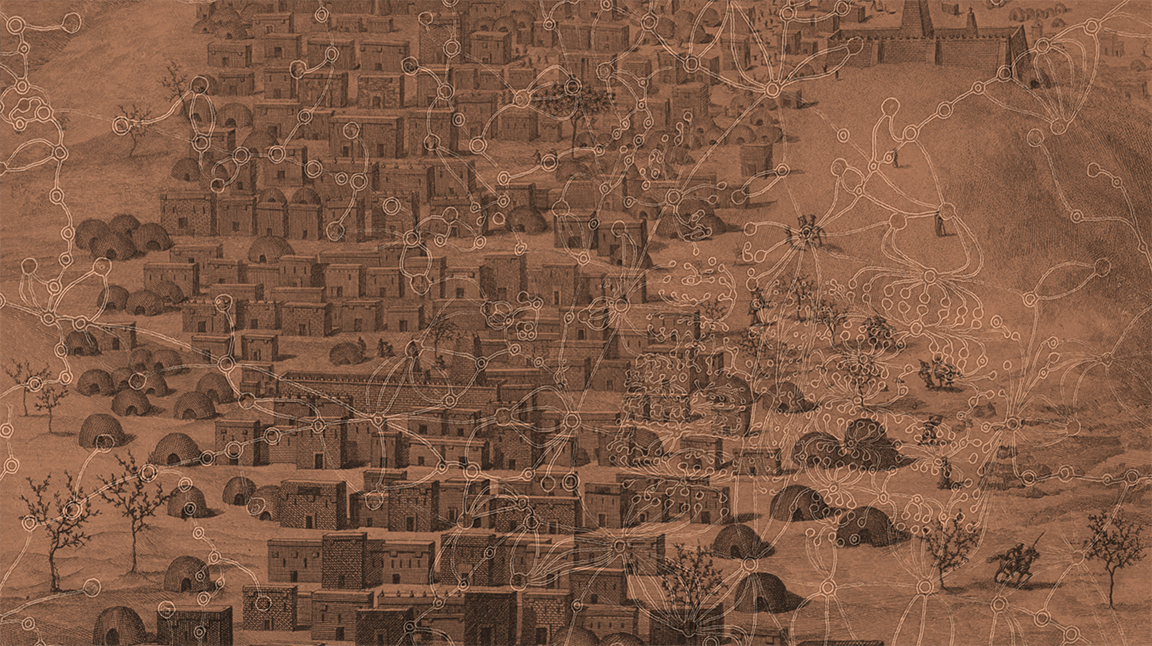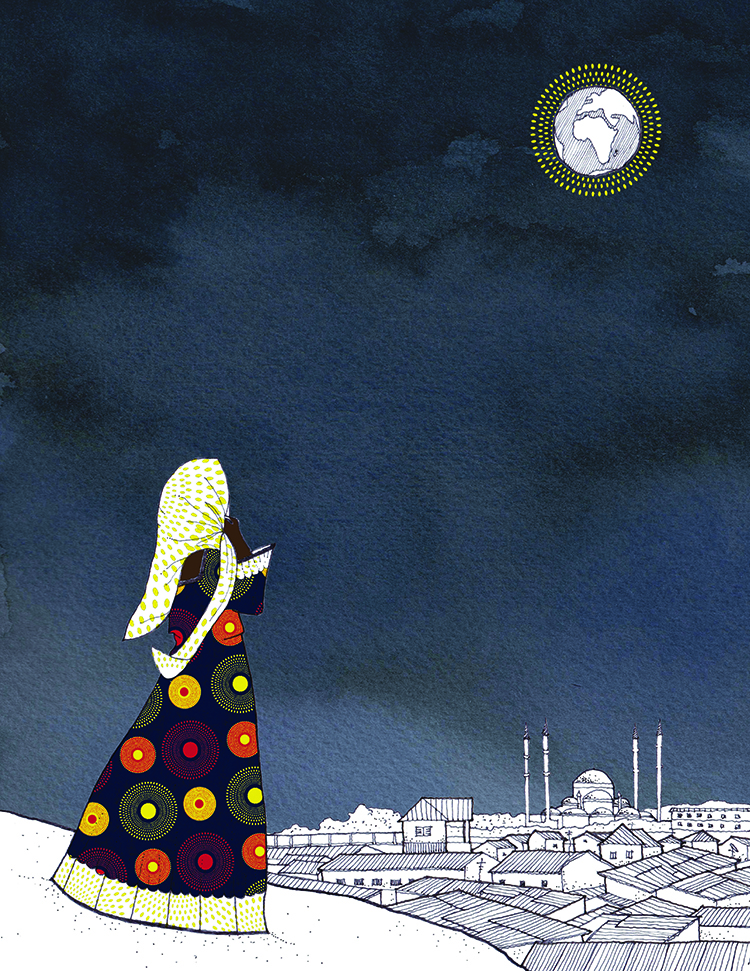Lectures, Conferences & Events» Past Lectures & Events
. 

Tangier at the Crossroads: Memories of Cosmopolitanism and Dreams of Technological Modernity
Michael A Toler
Archnet Content Manager, Aga Khan Documentation Center (AKDC@MIT), MIT Libraries
Abstract
This presentation looks at the development of the city of Tangier during two periods of extremely rapid transformation approximately a century apart. The first was at the beginning of the 20th century around the time during which Morocco was divided up by French and Spanish colonial powers into two protectorate zones. Although this colonial system changed the administrative and military landscape in the area surrounding the city, Tangier itself continued being a de facto International Zone until its formal declaration as such in 1923. The second period has been ongoing since shortly after Mohammed VI assumed the throne after the unexpected death of Hassan II in 1999. There are many parallels between the development of the city during these two periods. While the first period saw the introduction of railways, airports, and roads suitable for vehicular traffic, the second period brought a construction boom and the first significant upgrade to those facilities since Moroccan Independence in 1956. During both periods a growing population expanded the city well beyond its existing limits. The beginning of the 20th century saw an influx of foreign nationals as well as wealthier residents marking the growth of the city beyond the confines of Kasbah and walled medina. The last two decades have also seen the construction of new neighborhoods to accommodate rapid demographic expansion, as well as massive investments in infrastructure upgrades. Authorities have also declared a new “City Center” that is so far from the traditional medina as to be outside the “New City” of the Protectorate era. The current expansion of the city is enabled by the central government once again making tremendous investments and embracing a city that had largely been neglected since independence. In many ways, Tangier is cast as paradigmatic of modern Morocco. While these two periods are over a century apart and mark distinct periods in Moroccan history, a comparative analysis of urban developments during each is insightful. This presentation explores the dynamics of Tangier’s transformation since the early 20th century and poses questions regarding the implications for the city’s residents. The current expansion of the city is enabled by the central government once again making tremendous investments and embracing a city that had largely been neglected since independence, largely in an effort to attract investment from abroad, once again making Tangier an international zone, albeit it one under Moroccan sovereignty. Yet in many ways, Tangier is cast as paradigmatic of modern Morocco as a whole. While these two periods are over a century apart and mark distinct periods in Moroccan history, a comparative analysis of urban developments during each is insightful. This presentation explores the dynamics of Tangier’s transformation since the early 20th century and poses questions regarding the implications for the city’s residents.
Bio
Michael A. Toler received a PhD in Comparative Literature with a Certificate in Translation Studies from Binghamton University (SUNY). He has been the Archnet Content Manager since September 2012. Prior to that he served as the Program Director for the Al Musharaka Initiative of the National Institute for Technology and Liberal Education (NITLE), a Mellon Initiative. Michael was responsible for development of content for the Arab Culture and Civilization Online Resource, and for coordinating inter-institutional, collaborative endeavors of faculty, librarians, and technologists using technology to enhance teaching and research on topics relating to Islam, the Middle East, and North Africa. His personal research interests are focused on intersections between literature, popular culture, and the built environment in the Francophone Maghreb, particularly Morocco and Algeria.

Elusive Things: Materialities and Spatialities in the Vicinity of Nigér
Ikem Stanley Okoye
Associate Professor, Art History Department – Africana Department, University of Delaware
Abstact
Architects, architectural historians, and conservators from across three continents, all pursuing their own agendas and interests, have worked rather more intensively in the Sahel over recent years than in the past, African practitioners included. The context is one, however, in which architectural histories that are only ever partial, produced here under constraint, can leave unreliable interpretations of the architectural past to which at least some architects and conservators refer, or from which they seek inspiration or direction. Overcoming the reading of historical architecture through the lens of the traditional conceptualizations of space and medium with which architectural knowledge has worked, in favor of critical engagement with dynamic intersections of spatiality and materiality, and their forms of situatedness, offer superior ground not only for historical reconstruction, but for contemporary architecture and conservation. This might be especially true, if we do so imagining the possibility of architectures and historiographies of decoloniality.
Bio
Ikem Stanley Okoye teaches in the Art History Department at the University of Delaware, on whose faculty he has been since 2000. There, he holds a joint appointment in the Africana Studies Department (formerly the Black American Studies Program), has served as Director of the African Studies Program, and as a member of the Delaware Design Institute. Okoye is currently a Mellon Researcher with the Canadian Center for Architecture, working on the “Centring Africa” project, in relation to his writing project called Where was Modernism. He has held fellowships at the Institute for Advanced Study, Princeton, and the Center for Modern Oriental Studies, Berlin, among many other fellowships and grants. His essays on architecture, art, and the landscape are widely published in journals including Interventions– journal of Postcolonial Studies; RES _Journal of Anthropology and Aesthetics; Journal of the Society of Architectural Historians; Critical Interventions, and NKA; and in book anthologies such as the forthcoming title Radical Pedagogies (Beatrice Colomina and Anna-Marie Meister, (eds.); Cultural Heritage Landscapes in Sub Saharan Africa, John Beardsley (ed); Art History and Fetishism Abroad, Genge and Stercken (eds.); Exiles, Diasporas and Strangers, Kobena Mercer [ed.]; and Architecture and Pictures (Koehler and Anderson (eds.). His work has also focused on the African architecture of early colonial Nigeria, and is the subject of a long in-process forthcoming book Hideous Architecture (Leiden: Brill). He has two other books nearing completion, the above mentioned Where was Modernism, as well as a book with a wider artefactual breadth that is exploring sculpture, diminutive architecture, and landscapes of West Africa in the latter years of the Transatlantic slave trade and its immediate aftermath. With the preliminary title Fetish, Landscape, Architecture—this work asks questions about how we have grappled with the definition of architecture such that it brings us to the troubling place in which Africa comes to be represented neither in the history of architecture nor in landscape history, even when these histories are globally thought.
Professor Okoye occasionally enjoys a research-oriented practice in architecture as “Ikem Okoye + Anubis Architecture”.
“Remember Your Grave:” Negotiating Uncertainty in an Accra Zongo
Emily Anne Williamson
PhD Candidate in Anthropology, Boston University
Abstract
“We are all strangers here. The zongo is not like those other places outside. It is like a door to the country – a place where you see yourself and all other countries there. It is a place on your way somewhere else.” This statement from one of my interlocutors in Nima, a zongo (Hausa settlement) in the midst of urban Accra, Ghana, raises fascinating questions about how zongo inhabitants live in tension with other people, objects, spirits, and values that, as another resident explained “just don’t go together. Like rice and stones, we are all mixed up.” My long-term research project has followed the comings-and-goings (zirga-zirga) that texture everyday life in the expansive network of zongos stretching across West Africa. More than other parts of West Africa, Ghana (formerly the Gold Coast) has a deep history of regulating movements in and across these zongos, as it fashioned a Christian, civilized nation set against the so-called backwards Muslim Other inhabiting these spaces. Against and through these conditions, comings-and-goings in Ghanaian zongos are riddled with uncertainties, such as economic vulnerability, a strong sense of distrust, and little reliance on law enforcement. Yet they are also lined with hope, opportunity, and dreams of elsewhere. How, then, does one make sense of the contradictory nature of a lived reality defined by these comings and goings? What might life-ways steeped in multiplicity teach us about an ethics of living with others that relies less on singular, abstract principles than it does on pivoting to gain another perspective?
To answer these questions, I draw on my extended ethnographic fieldwork in Nima – arguably the largest and most diverse zongo in Ghana – where these dynamics take their most crystalline form. Nima residents regularly voice moral injunctions to each other, such as “sweep your path,” cover your secrets,” or “protect your road.” These phrases are called “karin magana” (literally “folded speech”) in Hausa, and they encode insights into how Nima residents try on multiple ideas, languages, gestures, and activities to re-think their relationships to other people and places. My presentation focuses on one of these “folded” phrases – “remember your grave” – in order to investigate how people in Nima contend with the co-presence of two worlds: a material world that we can feel and touch and a spiritual world of death and the afterlife that lies ahead and outside it. Through speech performances, experiences at a funeral, social media, and wall art moored to the materiality of the grave, I explore how “Folded Speech” works to help individuals “on the move” create a life straddling these material and spiritual worlds.
Bio
Emily Anne Williamson is a PhD candidate in anthropology at Boston University. Her current research focuses on questions of contradiction, materiality, and moral experience among “zongos,” the name used to describe predominantly Muslim urban settlements in Ghana, West Africa. Emily holds a Master of Science in Architectural Studies from the Massachusetts Institute of Technology (MIT), a Master of Architecture degree from the University of Virginia (UVA), and an undergraduate degree in Art History from Colby College. Emily has also worked as an architect in Washington, DC, collaborated on cultural heritage projects in Ghana, Peru, and Haiti, has taught at Landscape Architecture at the Rhode Island School of Design, and is a co-founder of the nonprofit organization called the “Zongo Story Project” (www.zongostoryproject.com) in which she works with students in Ghana to write, illustrate, and tell stories that are meaningful to them. In 2016, their book, “Gizo-Gizo: A Tale from the Zongo Lagoon,” won the African Studies Association’s Africana Book Award for best children’s book.
Emily has a lasting commitment to researching and working with communities in Ghana. With over thirteen years of engagement with zongo residents as a teacher, designer, landscape heritage consultant, and anthropologist, she has gained cultural literacy and built trusted relationships among zongos in Accra, Cape Coast, Elmina, Salt Pond, Kumasi, Techiman, Wa, and the Bronx, New York. In graduate school at UVA, she worked with the local non-profit Ghanaian Heritage Conservation Trust, Metropolitan Assembly, and Cape Coast zongo to design and implement a long-term community-based project aiming to mutually improve their water infrastructure and quality of life. As a graduate student at MIT, she traveled the historic Black Volta Islamic trade route linking zongos from the Gulf of Guinea to the Sahel to tell a nuanced historical account of these zongos’ socio-spatial evolution. And on a much smaller scale, she worked collaboratively with the Ghana Museums and Monuments Board and International Monetary Fund, to interview residents and survey existing Asante religious shrine buildings so as to develop a long-term, community-based preservation plan for the city of Kumasi.
Most recently, as a graduate student in anthropology at Boston University, she has become proficient in the Hausa language and completed 18 months of ethnographic fieldwork in Accra, Ghana under a Fulbright-Hays Dissertation Research Grant (2018-2020). A few of Emily’s publications include: a Review of Swahili Port Cities: The Architecture of Elsewhere, by Prita Meier (H-AMCA: Humanities and Social Sciences Online, 2017); “Understanding the Zongo: socio-spatial processes of marginalization in Ghana.” (The African Metropolis edited by Toyin Falola and Bisola Falola, 2017), “Gizo-Gizo: A Tale from the Zongo Lagoon,” and “Zongo: Water Infrastructure and Public Life” (University of Chicago Art Journal, 2010).
For more information about her projects and publications, please visit her website at: www.emilywibrahim.com
